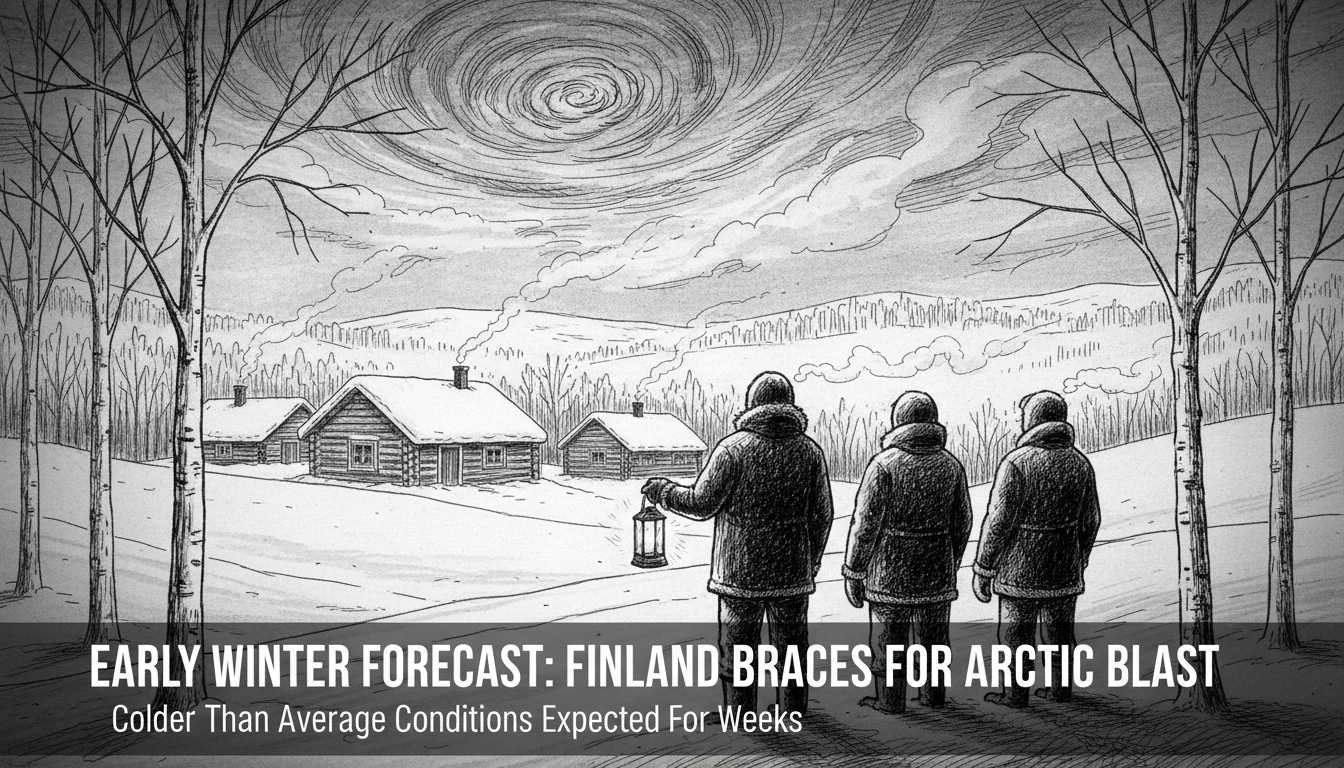Finland faces a significant weather shift as meteorological authorities predict colder than average conditions for the early winter period. The Finnish Meteorological Institute reports multiple atmospheric indicators suggesting a prolonged cold spell that could last several weeks or even extend for a couple of months.
This forecasted cold period follows an unusually mild late autumn across the country. The change stems from a weakening polar vortex above the northern polar region, which increases the likelihood of arctic air masses moving southward. The vortex is expected to reach its weakest phase around November 25, according to meteorological officials.
The polar vortex's weakening results from its center shifting away from the pole and moving closer to Finland. This atmospheric pattern could redirect European low-pressure systems southward toward Central and Southern Europe, allowing cold northern air currents to dominate Finnish weather patterns.
A high-pressure system already forming over Greenland adds another factor to the complex weather equation. This blocking high-pressure system could persist until Christmas, creating what meteorologists describe as meteorologically interesting but socially challenging conditions.
Such weather patterns would bring low-pressure systems across or south of Finland, moving from southwest to northeast. These systems would deliver substantial precipitation and windy conditions. Occasional snow squalls from southern and southeastern directions also remain possible.
The prolonged cold period could result in significant snow accumulation across various parts of Finland. Meanwhile, southern regions might experience periods of intense frost despite their typically milder winter conditions.
Meteorological experts note uncertainties remain about the exact positioning of the Greenland high-pressure system. If low-pressure tracks shift westward, Finland could instead receive warmer air masses from the south. This alternative scenario would increase the probability of rainfall or even winter floods.
The potential for extended cold weather carries practical implications for residents and infrastructure. Extended freezing temperatures test heating systems and energy networks, while heavy snowfall challenges transportation and maintenance services. Municipalities typically prepare for such conditions through winter maintenance protocols and emergency response planning.
Historical weather patterns show that Finland experiences similar cold spells periodically, though each event brings unique characteristics. The country's infrastructure and population generally adapt well to winter conditions, but prolonged extreme cold always presents additional challenges for daily life and economic activities.

